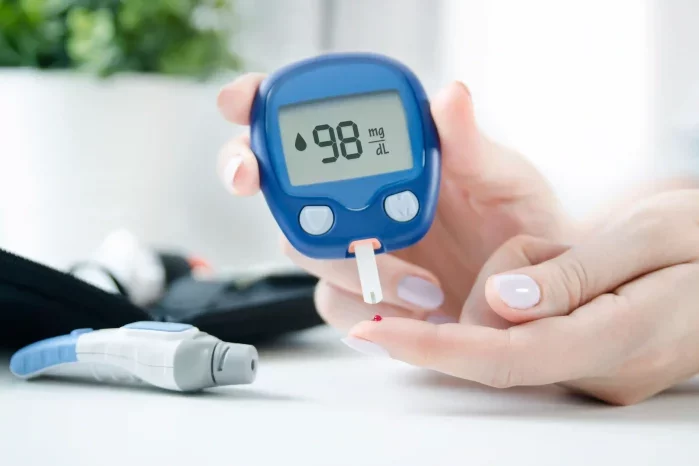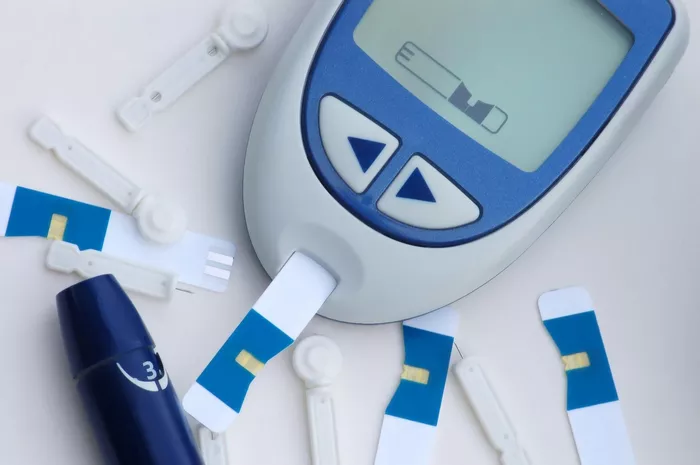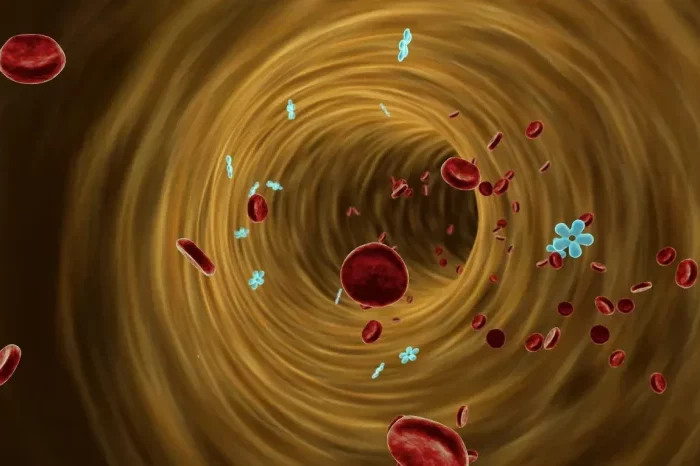Living with diabetes requires careful attention to diet and nutrition to help manage blood sugar levels and prevent complications. Among the key components of a healthy diabetic diet are fruits and vegetables, which provide essential vitamins, minerals, fiber, and antioxidants. However, not all fruits and vegetables are created equal when it comes to managing diabetes. Understanding which ones are best suited for individuals with diabetes can help make informed dietary choices and promote better health outcomes.
Fruits and Diabetes: What to Consider
Fruits are naturally sweet and contain carbohydrates, including sugars such as fructose. For individuals with diabetes, it’s essential to be mindful of the carbohydrate content in fruits, as they can affect blood sugar levels. However, not all fruits have the same impact on blood sugar, and some are better choices for those managing diabetes.
When selecting fruits, consider the following factors:
Glycemic Index (GI): The glycemic index is a measure of how quickly a carbohydrate-containing food raises blood sugar levels. Fruits with a lower GI are digested and absorbed more slowly, resulting in a gradual increase in blood sugar levels compared to fruits with a higher GI.
Fiber Content: Fiber helps slow down the digestion and absorption of carbohydrates, which can help prevent rapid spikes in blood sugar levels. Choosing fruits high in fiber can be beneficial for individuals with diabetes.
Portion Size: While fruits are nutritious, consuming large portions can lead to an excessive intake of carbohydrates, which may impact blood sugar control. It’s essential to be mindful of portion sizes and monitor blood sugar levels after consuming fruit.
Best Fruits for Diabetics
Berries: Berries such as strawberries, blueberries, raspberries, and blackberries are low in calories and carbohydrates while being rich in fiber, vitamins, and antioxidants. They have a low glycemic index, making them an excellent choice for individuals with diabetes.
Apples: Apples are a good source of fiber and vitamin C and have a relatively low glycemic index compared to some other fruits. Eating apples with the skin on provides additional fiber, which can help stabilize blood sugar levels.
Citrus Fruits: Oranges, grapefruits, lemons, and limes are rich in vitamin C and fiber. They have a moderate glycemic index and can be included in a diabetic diet in moderation.
Cherries: Cherries are packed with antioxidants and have a low glycemic index, making them a suitable option for individuals with diabetes. However, they should be consumed in moderation due to their natural sugar content.
Pears: Pears are high in fiber and contain vitamins and minerals such as vitamin C, potassium, and folate. They have a low to moderate glycemic index and can be included as part of a balanced diabetic diet.
Kiwi: Kiwifruit is low in calories and carbohydrates and rich in fiber, vitamin C, and potassium. It has a low glycemic index and can be a refreshing addition to a diabetic meal plan.
Apricots: Fresh apricots are low in calories and carbohydrates and contain fiber, vitamin A, and potassium. They have a moderate glycemic index and can be enjoyed as a healthy snack for individuals with diabetes.
Avocado: Although technically a fruit, avocados are low in carbohydrates and rich in heart-healthy fats, fiber, and potassium. They have a negligible impact on blood sugar levels and can be included in moderation in a diabetic diet.
Vegetables and Diabetes: Making Smart Choices
Vegetables are an essential part of a diabetic diet due to their low calorie and carbohydrate content, high fiber content, and abundance of vitamins and minerals. They can help promote satiety, stabilize blood sugar levels, and reduce the risk of chronic diseases associated with diabetes, such as heart disease and stroke.
When selecting vegetables, consider the following factors:
Non-Starchy vs. Starchy Vegetables: Non-starchy vegetables are low in calories and carbohydrates and have a minimal impact on blood sugar levels. Examples include leafy greens, broccoli, cauliflower, cucumbers, tomatoes, peppers, and mushrooms. Starchy vegetables, such as potatoes, corn, peas, and winter squash, contain more carbohydrates and may have a greater effect on blood sugar levels.
Cooking Methods: How vegetables are prepared can affect their nutritional content and impact on blood sugar levels. Opt for cooking methods such as steaming, roasting, or sautéing with minimal added fats and sugars to preserve nutrients and minimize the glycemic load.
Portion Control: While vegetables are generally low in calories and carbohydrates, it’s essential to be mindful of portion sizes, especially for starchy vegetables. Aim to fill half your plate with non-starchy vegetables and limit portions of starchy vegetables to control carbohydrate intake.
Best Vegetables for Diabetics
Leafy Greens: Spinach, kale, Swiss chard, collard greens, and arugula are low in calories and carbohydrates and rich in fiber, vitamins, and minerals. They have a minimal impact on blood sugar levels and can be consumed in abundance.
Broccoli: Broccoli is a cruciferous vegetable rich in fiber, vitamin C, and antioxidants. It has a low glycemic index and can be enjoyed raw or cooked as part of a diabetic meal plan.
Cauliflower: Cauliflower is a versatile vegetable that can be used as a low-carb alternative to grains and potatoes. It is rich in fiber, vitamin C, and other nutrients and has a low glycemic index.
Bell Peppers: Bell peppers are low in calories and carbohydrates and rich in vitamin C, vitamin A, and antioxidants. They come in various colors, including red, yellow, orange, and green, and can add flavor and color to meals without significantly impacting blood sugar levels.
Cucumbers: Cucumbers are high in water content and low in calories and carbohydrates. They make a refreshing snack and can be added to salads, sandwiches, and wraps for added crunch and hydration.
Tomatoes: Tomatoes are rich in vitamins, minerals, and antioxidants, including vitamin C, potassium, and lycopene. They have a low glycemic index and can be enjoyed fresh or cooked in various dishes.
Green Beans: Green beans are low in calories and carbohydrates and rich in fiber, vitamins, and minerals. They have a minimal impact on blood sugar levels and can be steamed, roasted, or sautéed as a nutritious side dish.
Zucchini: Zucchini is low in calories and carbohydrates and high in fiber, vitamins, and minerals. It can be spiralized into noodles, grilled, or sautéed as a low-carb alternative to pasta or rice.
Incorporating Fruits and Vegetables Into a Diabetic Diet
While fruits and vegetables are essential components of a healthy diabetic diet, it’s essential to incorporate them into meals and snacks in a balanced and mindful way. Here are some tips for incorporating fruits and vegetables into a diabetic diet:
Focus on Variety: Include a variety of fruits and vegetables in different colors, textures, and flavors to maximize nutrient intake and enjoyment.
Watch Portion Sizes: Be mindful of portion sizes, especially for fruits and starchy vegetables, to control carbohydrate intake and prevent spikes in blood sugar levels.
Prioritize Whole Fruits: Opt for whole fruits rather than fruit juices or canned fruits packed in syrup, which can be higher in sugar and lower in fiber. Whole fruits contain more fiber, which helps slow down the absorption of sugars and promotes satiety.
Combine with Protein and Healthy Fats: Pairing fruits and vegetables with lean proteins, healthy fats, and complex carbohydrates can help balance blood sugar levels and promote fullness. For example, enjoy sliced apples with peanut butter or add avocado to a salad with leafy greens and grilled chicken.
Mindful Snacking: Use fruits and vegetables as nutritious snacks between meals to satisfy hunger and prevent overeating. Keep pre-cut vegetables or fruit slices on hand for convenient and healthy snacking options.
Experiment with Cooking Methods: Explore different cooking methods such as roasting, grilling, steaming, and sautéing to enhance the flavor and texture of fruits and vegetables without adding excess fats or sugars.
Read Labels: When purchasing packaged or canned fruits and vegetables, check the labels for added sugars, sodium, and preservatives. Choose options with little to no added sugars and minimal processing.
Be Mindful of Dried Fruits: While dried fruits can be a convenient and portable snack, they are more concentrated in sugars and calories compared to fresh fruits. Limit portion sizes and choose unsweetened varieties whenever possible.
Consider Frozen Options: Frozen fruits and vegetables are convenient, budget-friendly, and retain their nutritional value. Stock up on frozen options to have a variety of fruits and vegetables available year-round.
Consult with a Registered Dietitian: For personalized dietary guidance and meal planning tailored to your individual needs and preferences, consider consulting with a registered dietitian specializing in diabetes management.
Conclusion
Incorporating a variety of fruits and vegetables into a diabetic diet can provide essential nutrients, fiber, and antioxidants while helping to manage blood sugar levels and promote overall health. By choosing fruits and vegetables with a lower glycemic index, focusing on whole and minimally processed options, and being mindful of portion sizes, individuals with diabetes can enjoy a diverse and satisfying array of nutritious foods as part of a balanced meal plan. With careful planning and attention to dietary choices, fruits and vegetables can be valuable allies in the management of diabetes and the pursuit of optimal health and well-being.



























